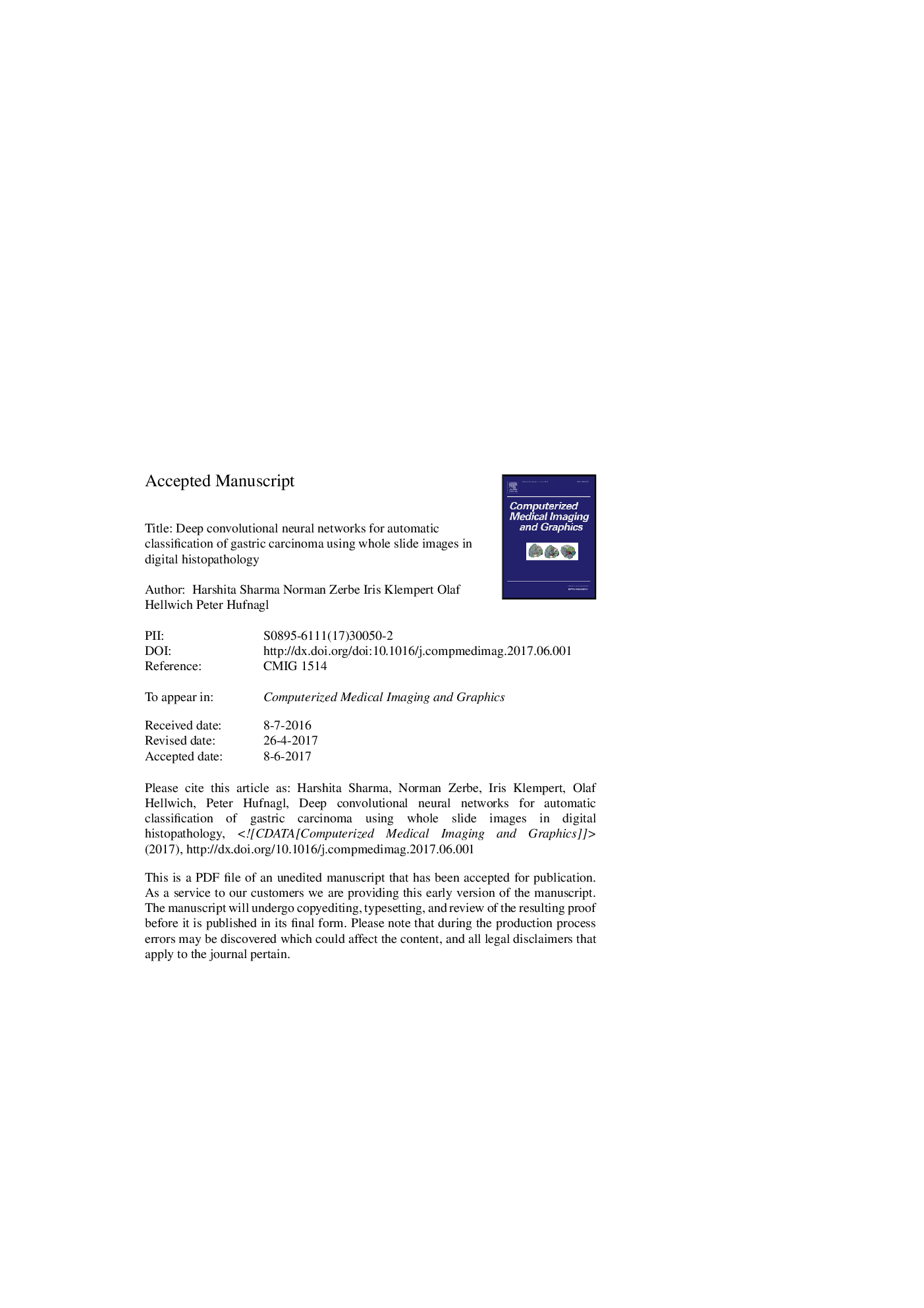| Article ID | Journal | Published Year | Pages | File Type |
|---|---|---|---|---|
| 6920294 | Computerized Medical Imaging and Graphics | 2017 | 33 Pages |
Abstract
Deep learning using convolutional neural networks is an actively emerging field in histological image analysis. This study explores deep learning methods for computer-aided classification in H&E stained histopathological whole slide images of gastric carcinoma. An introductory convolutional neural network architecture is proposed for two computerized applications, namely, cancer classification based on immunohistochemical response and necrosis detection based on the existence of tumor necrosis in the tissue. Classification performance of the developed deep learning approach is quantitatively compared with traditional image analysis methods in digital histopathology requiring prior computation of handcrafted features, such as statistical measures using gray level co-occurrence matrix, Gabor filter-bank responses, LBP histograms, gray histograms, HSV histograms and RGB histograms, followed by random forest machine learning. Additionally, the widely known AlexNet deep convolutional framework is comparatively analyzed for the corresponding classification problems. The proposed convolutional neural network architecture reports favorable results, with an overall classification accuracy of 0.6990 for cancer classification and 0.8144 for necrosis detection.
Keywords
Related Topics
Physical Sciences and Engineering
Computer Science
Computer Science Applications
Authors
Harshita Sharma, Norman Zerbe, Iris Klempert, Olaf Hellwich, Peter Hufnagl,
